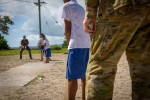Search
Using the filters to the left, click your selection, it will become bold and filter the results, click it again to remove that filter.
What can the benefits of Train, Advise and Assist missions be for members of Army and the ADF? Train, Advise and Assist (TAA) missions have been a major component of Australian Defence Force (ADF) and Army operations since the end of the Second World War. Defence undertakes these missions, as directed by government and its ministers, to aid, train and develop the forces of Australia’s partner nations. Although these partner forces are the focus of training, it is wrong to characterise these TAA missions as …

Army’s Role in Train, Advise and Assist Missions In June, the AARC launched its winter series ‘ Short Thoughts Competition ’ on Army’s role in train, advise and assist missions. The purpose was to encourage authors to think about whether such a capability could play a part in Army’s post-DSR future, and encourage them to think about the shape of proposed activities in the Indo-Pacific that could inform and shape the organisation’s future. The forthcoming Spring Short Thoughts Competition will be similarly …
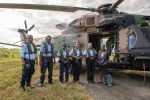
Victorious warriors win first and then go to war, while defeated warriors go to war first and then seek to win. Sun Tzu Introduction The Australian Army has an extensive history of conducting train, advise and assist (TAA) missions. These missions represent a flexible, scalable and low-risk component of national strategy. The Defence Strategic Update [i] (DSU) highlighted the requirement to shape, deter and respond to challenges within the Indo-Pacific region. In describing the shaping function, the DSU …
Over the past decade, the Australian Army has established itself as the ‘preferred partner’ within the Indo-Pacific region. The Indo-Pacific region covers the area from India to Papua New Guinea, extending to North Korea in the North, our greatest footprint landing within the archipelagos of the Pacific Ocean north of Australia. The importance of maintaining or gaining the ‘preferred partner’ status with the countries in the region is highlighted by the meagre 800km stretch of ocean that separates the …
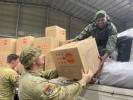
Introduction Since 2017, measles outbreaks have been surging around the globe, with many Indo-Pacific nations experiencing disease outbreaks due to low vaccination rates [i] . A targeted vaccination program provides opportunities for the Australian Defence Force (ADF) to supplement its traditional train, advise and assist missions with a low-risk and cost-effective public health intervention while delivering a strategic deterrent effect within our region. Measles vaccinations provide a legitimate reason …
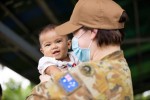
To read the commentary and reporting that was published when the Defence Strategic Review (DSR) was released, you would have to conclude that these are dark times for Army and that the need for land power is either diminished or no longer required. Such a perception, however, would be misplaced. The DSR makes it clear that Army must to be able to get out into our immediate region, that it must be able to project land power, and that it must be engaged with our neighbours. Importantly, the DSR emphasises …
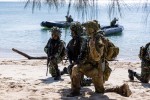
In recent years, Australia’s security force assistance has primarily focused on states that are categorised as fragile or engaged in conflicts. However, expanding the policy toolkit of the Australian Defence Force (ADF) to encompass developed and advanced states could present new opportunities for achieving national government objectives, as well as benefiting the ADF and the Australian Army. Several of Australia’s partner nations, such as the United Arab Emirates, fall under the category of developed and …
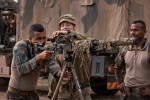
As National Defence: Defence Strategic Review 2023 (DSR 23) is implemented, the Australian Army may continue its, historically validated, ad hoc and bespoke, pathway to train, advise and assist (TAA) missions. An alternate pathway, however, assesses that the urgency of DSR 23 - emphasising ‘assistance [as] a key pillar of [Australia’s] broader bilateral relationships in the region’ - no longer sanctions traditional ad hoc approaches to TAA missions. This Land Power Forum post argues for a standing …
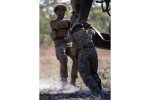
Introduction Train, advise and assist missions play a pivotal role in the Indo-Pacific region, where fostering stability and security is of utmost importance. These missions involve the Australian Army working closely with partner nations to build their military capabilities, enhance their operational effectiveness, and promote regional cooperation. By leveraging these missions within a deterrence framework, the Australian Army both contributes to regional stability and also reinforces the message that any …

Army’s Role in Train, Advise and Assist Missions 前事不忘,后事之师 “Do not forget the past, for it serves as a teacher for the future” Chinese proverb The actions of Australian commandos in Japanese-occupied East Timor during World War 2 are well established in the Australian Army legacy. Less widely known, however, is the fact that Australia, not Japan, was first to invade East Timor in December 1941. The deployment of a joint Australian and Dutch force into Portuguese Timor, 10 days after the Japanese attack on …
